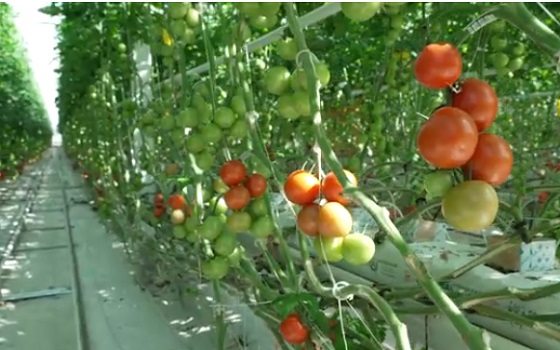Business
Provincial governments should follow Manitoba’s lead and allow the online sale of alcoholic beverages from other provinces

From the Montreal Economic Institute
By Shal Marriott and Gabriel Giguère
Removing Interprovincial Barriers to Online Alcohol Sales
Canada’s provincial and territorial governments should allow consumers to shop online for alcoholic beverages produced elsewhere in the country, indicates an MEI publication.
“The restrictions imposed by provincial alcohol monopolies are such that it is sometimes easier for a Canadian producer to sell its products on the other side of the world than in the province next door,” explains Shal Marriott, research associate at the MEI and author of the study. “By allowing producers to sell their products online, directly to consumers, our provincial governments would remove obstacles to their growth.”
In 2019, the federal, provincial, and territorial governments had committed to improving interprovincial trade in alcoholic beverages. This commitment stems directly from the Canadian Free Trade Agreement, signed two years before.
Manitoba is the only province to allow its residents to shop online for Canadian alcoholic beverages from other provinces, without restriction.
British Columbia, Saskatchewan, Alberta, and Nova Scotia have partial restrictions, allowing consumers to shop online for certain categories of products from specific parts of the country.
Ontario, Quebec, New Brunswick, Prince Edward Island, and Newfoundland and Labrador each continue to prohibit consumers from shopping online for alcoholic beverages from outside the province.
“By opening the door to this online commerce, our provincial governments would allow consumers to discover new products that they otherwise cannot purchase at home,” says Ms. Marriott. “This is the kind of simple measure that could also give our microbreweries, our wineries, and our distilleries a helping hand.”
The alcoholic beverage sector contributes over $4.4 billion to the Canadian economy, according to the latest available data.
Viewpoint calling on Canada’s provincial governments to allow the unrestricted online purchase and shipment of alcoholic beverages from one province to another
* * *
This Viewpoint was prepared by Shal Marriott, Research Associate at the MEI, in collaboration with Gabriel Giguère, Senior Policy Analyst at the MEI. The MEI’s Regulation Series aims to examine the often unintended consequences for individuals and businesses of various laws and rules, in contrast with their stated goals.
In October 2012, retiree Gerard Comeau was stopped by the RCMP and fined for bringing a too large quantity of beer and liquor from Quebec into New Brunswick, violating the personal exemption limit in place. In its ruling on the Comeau case in April 2018, the Supreme Court of Canada upheld provincial governments’ right to maintain such restrictions, provided they did not intentionally impede interprovincial alcohol trade.(1)
A year later, however, the federal government and the provinces agreed on an Action Plan “to enhance interprovincial trade of alcoholic beverages,” stemming from the 2017 Canadian Free Trade Agreement (CFTA).(2) This included increasing, and ultimately eliminating, personal use exemption limits (which set the amount of alcohol one can bring back from another province) and creating e-commerce platforms.(3)
Some progress has been made to raise or remove personal exemption limits across the country, meaning that Canadians can now import and transport alcohol more easily across most provincial lines for personal consumption, without penalty.(4) Most provinces, however, have failed to liberalize other areas of interprovincial alcohol trade, such as interprovincial online retail sales of alcoholic products, thus depriving Canadians of the benefits of greater competition, namely a broader choice of products and lower prices.
The Current State of Online Alcohol Retail Sales
There have been some efforts to allow greater freedom in online alcohol sales, such as Saskatchewan and British Columbia allowing a limited form of direct-to-consumer sales and shipping of wine and craft spirits from producers in the other province.(5) However, most Canadian provinces continue to prohibit the online retail sale of alcoholic beverages from other provinces directly to their consumers. For example, the Société des alcools du Québec (SAQ) states that while producers are not restricted formally from offering to sell to residents of Quebec, it is illegal for those Quebec residents to make such purchases and have them shipped into the province.(6)
As can be seen in Table 1, few provinces allow producers from other provinces to ship directly to consumers. Manitoba is the only Canadian province with no interprovincial online purchasing restrictions. The restrictions that have been removed in Western provinces and Nova Scotia are also relatively limited (and mainly concern wine). Quebec and Ontario retain complete prohibitions, which is hardly surprising as they are also among the provinces that have made the least progress towards the liberalization of internal trade more broadly.(7)

While we see some improvement in Alberta’s willingness to allow some direct-to-consumer shipments, continued protectionism still exists in the province’s alcohol trade. For example, in January 2024, the Alberta Gaming, Liquor and Cannabis (AGLC) corporation argued that direct-to-consumer shipping was having a negative impact on the provincial liquor monopoly.(8) In reaction, it threatened to stop selling BC wines in its stores until this practice ceased, and this position was seemingly supported by the Alberta government as there was no action to condemn the stance of the AGLC.(9)
Although a memorandum of understanding was reached six months later, ending a temporary ban that had been imposed, this showcases that provincial liquor monopolies, and provincial governments, are willing to enforce interprovincial trade barriers that ultimately deprive Canadian producers and consumers.(10)
The Benefits of Direct-to-Consumer Purchasing Online
There has been a general growth in the online consumer goods market, but Canadian producers and consumers of alcohol products have been unable to fully participate in, and benefit from, this opportunity. This protects provincial alcohol monopolies with their brick-and-mortar stores, which are thus shielded from online competition, at the expense of consumers and producers, whose ability to engage in trade with each other is limited.(11)
Liquor monopolies thus find it easier to impose artificially high prices on the products they retail. The SAQ, for instance, imposes markups on bottles of wine which, when combined with excise and sales taxes, can account for over 75% of the retail price of the product.(12)
Abolishing these restrictions on interprovincial shipping directly to consumers would allow Canadians in any province to freely order online from alcohol producers anywhere in the country. Online sales are one of the most convenient ways for consumers to purchase alcohol from other provinces. Opening up this type of commerce would also be good for smaller breweries, wineries, and distilleries, allowing them to expand their reach within the domestic market.
The federal government has declared a commitment to an increasingly liberalized domestic alcohol market.(13) Yet, this liberalization is being hindered by provincial governments and alcohol monopolies that limit the growth of the domestic market. For the sake of Canadian consumers and producers alike, the provinces should simply allow the unrestricted online purchase and shipment of alcohol from other provinces.
Local Business
Red Deer Downtown Business Association to Wind Down Operations

The Downtown Business Association (DBA) Board of Directors has made the decision to wind down the Association’s operations at the end of 2025.
The Board determined that the Association is no longer able to operate sustainably under the financial framework available for 2026. After exploring all reasonable alternatives, the Board concluded that it could not continue without reducing services to a level that would no longer provide meaningful value to levy-paying businesses.
The DBA does not receive any operating funding from City Hall in a regular year, all funds raised are through Business Improvement Area Levy that consists of a mandatory levy placed on all businesses operating within the Business Improvement Area. These funds are legislated under the Municipal
Government Act, to be used to promote the Business Improvement Area, which is achieved through marketing and event initiatives along with providing advocacy support primarily to local government on behalf of the business community.
In recent years, the DBA has been a committed advocate for re-examining the approach to Downtown Governance. The Board has consistently maintained that the responsibility for funding downtown initiatives in such a socially charged environment should not rest solely with the business community.
Despite their efforts, the DBA recognized that the funds generated through the Business Improvement Area Levy were insufficient to effectively address the growing challenges of the current operating environment. This ongoing financial strain highlighted the need for a more equitable and sustainable
model to re-establish the downtown as a safe and welcoming heart of the city.
At the annual DBA budget presentation to City Hall, the DBA requested the essential funding needed to implement the Greater Downtown Governance Committee’s recommendations — work that the DBA is uniquely positioned to lead and has been delivering despite depleting resources for many years. The request was not approved. Instead, The City offered a one-time $100,000 Grant-in-Lieu, paired with a proposed 60% increase to the Business Improvement Area levy in 2026.
After careful analysis, the Board concluded that increasing the levy would place undue strain on already challenged businesses and compromise the DBA’s role as a trusted advocate. Operating with the reduced funding of $225,000 would require further staff reductions in an already under resourced environment and a significant reduction in programs, making it impossible to deliver the level of support that downtown businesses deserve and vitally need.
Beginning January 1, 2026, the City of Red Deer will become the primary contact point for matters previously supported by the DBA, including downtown support programs, business-district coordination, events, safety and cleanliness support, and stakeholder engagement. The DBA will work with City staff to support a smooth transition.
The DBA will continue to provide Clean Team services through the delivery of the City-funded environmental contract until February 1st, 2026.
Quote from CEO, Amanda Gould:
“To our business community, we have always operated with your best interests in our heart, continually driving the vision of a thriving downtown environment that serves every member of our community. The changes ahead will have a significant impact on downtown, as there will no longer be an organization dedicated to ensuring the downtown remains top-of-mind, leading events, marketing initiatives, or advocating on your behalf. It is likely you will experience less coordinated support and collective representation.
After 13 years of service to you and our beautiful downtown, it is with great personal sadness that we find ourselves here, but our message remains clear – addressing the unique challenges of our downtown should not rest solely on your shoulders. We cannot, in good faith, collect a levy that does not enable us to provide the essential services needed for our evolving downtown landscape”.
Quote from DBA Board Chair, Brandon Bouchard:
“The incredible staff at the Downtown Business Association have consistently delivered on their mandate with outstanding dedication and effectiveness. Through their efforts, they have successfully promoted the downtown area, organized impactful marketing and event initiatives, and provided steadfast
advocacy support for the business community. Their work has extended well beyond the legislated requirements, as they have proactively responded to the evolving needs of downtown businesses, adapting to challenges and supporting operations within a complex and changing environment.
Despite the staff’s relentless commitment to positioning the DBA as an effective leader for downtown interests, the absence of a sustainable funding model has made it impossible to continue delivering meaningful support. The Board cannot, in good conscience, propose a levy that does not enable the
Association to meet the required level of service, address the shifting priorities of the business community, or respond to the continually evolving needs of the downtown”.
Agriculture
Growing Alberta’s fresh food future

A new program funded by the Sustainable Canadian Agricultural Partnership will accelerate expansion in Alberta greenhouses and vertical farms.
Albertans want to keep their hard-earned money in the province and support producers by choosing locally grown, high-quality produce. The new three-year, $10-milllion Growing Greenhouses program aims to stimulate industry growth and provide fresh fruit and vegetables to Albertans throughout the year.
“Everything our ministry does is about ensuring Albertans have secure access to safe, high-quality food. We are continually working to build resilience and sustainability into our food production systems, increase opportunities for producers and processors, create jobs and feed Albertans. This new program will fund technologies that increase food production and improve energy efficiency.”
“Through this investment, we’re supporting Alberta’s growers and ensuring Canadians have access to fresh, locally-grown fruits and vegetables on grocery shelves year-round. This program strengthens local communities, drives innovation, and creates new opportunities for agricultural entrepreneurs, reinforcing Canada’s food system and economy.”
The Growing Greenhouses program supports the controlled environment agriculture sector with new construction or expansion improvements to existing greenhouses and vertical farms that produce food at a commercial scale. It also aligns with Alberta’s Buy Local initiative launched this year as consumers will be able to purchase more local produce all year-round.
The program was created in alignment with the needs identified by the greenhouse sector, with a goal to reduce seasonal import reliance entering fall, which increases fruit and vegetable prices.
“This program is a game-changer for Alberta’s greenhouse sector. By investing in expansion and innovation, we can grow more fresh produce year-round, reduce reliance on imports, and strengthen food security for Albertans. Our growers are ready to meet the demand with sustainable, locally grown vegetables and fruits, and this support ensures we can do so while creating new jobs and opportunities in communities across the province. We are very grateful to the Governments of Canada and Alberta for this investment in our sector and for working collaboratively with us.”
Sustainable Canadian Agricultural Partnership (Sustainable CAP)
Sustainable CAP is a five-year, $3.5-billion investment by federal, provincial and territorial governments to strengthen competitiveness, innovation and resiliency in Canada’s agriculture, agri-food and agri-based products sector. This includes $1 billion in federal programs and activities and $2.5 billion that is cost-shared 60 per cent federally and 40 per cent provincially/territorially for programs that are designed and delivered by provinces and territories.
Quick facts
- Alberta’s greenhouse sector ranks fourth in Canada:
- 195 greenhouses produce $145 million in produce and 60 per cent of them operate year-round.
- Greenhouse food production is growing by 6.2 per cent annually.
- Alberta imports $349 million in fresh produce annually.
- The program supports sector growth by investing in renewable and efficient energy systems, advanced lighting systems, energy-saving construction, and automation and robotics systems.
Related information
-

 Business1 day ago
Business1 day agoCanada Can Finally Profit From LNG If Ottawa Stops Dragging Its Feet
-

 Business2 days ago
Business2 days agoThe Climate-Risk Industrial Complex and the Manufactured Insurance Crisis
-

 Health2 days ago
Health2 days agoThe Data That Doesn’t Exist
-

 National1 day ago
National1 day agoLiberal bill “targets Christians” by removing religious exemption in hate-speech law
-

 Crime1 day ago
Crime1 day agoInside the Fortified Sinaloa-Linked Compound Canada Still Can’t Seize After 12 Years of Legal War
-

 Automotive9 hours ago
Automotive9 hours agoThe $50 Billion Question: EVs Never Delivered What Ottawa Promised
-

 Energy1 day ago
Energy1 day agoLNG NOW! Canada must act fast to prosper in changing times
-

 Health22 hours ago
Health22 hours agoUS podcaster Glenn Beck extends a lifeline to a Saskatchewan woman waiting for MAiD






